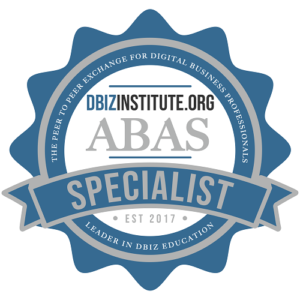Agile Business Analysis 101 – Face-to-Face
$1,195.00
Not your typical intro to agile class! This course focuses on teaching the basics of agile while explaining the limitations and provides recommendations for avoiding typical agile implementation pitfalls.
| Course Date | Standard Rate | Buy Before | Your Rate | Savings |
|---|---|---|---|---|
| Nov 17 '25 | $1,195.00 | Sep 18 | $895.00 | -$300.00 |
Not your typical intro to agile class! This course focuses on teaching the basics of agile while explaining the limitations and provides recommendations for avoiding typical agile implementation pitfalls.
The Agile Manifesto was created by and for software developers and doesn’t account for many issues that an enterprise level transformation will encounter like analysis, reporting, governance, project management, or regulatory considerations. It is a methodology on how to deliver software. Enterprise level transformations are failing (or not performing as well as anticipated) because these complexities are not addressed. In this course, we will provide insights to allow your organization to have a smoother agile transformation.
Specifically this course explains the agile methodology and its terminology while discussing the role that analysts and project managers can play. Agile topics include the agile sprint cycle, team roles, backlog creation and prioritization, iterative design, minimum viable product (MVP), definitions of done and definition of ready, the estimation process including story points and team velocity, sprint retrospective and its role in the continuous improvement process, the agile view of releasing software, the customer feedback process, and writing quality user stories. Whether you are a business analyst, a project manager, or an agile leader who is looking for ways to improve their program, this class is for you.
Agile Business Analysis 101 is a must for anyone who is making the transition to agile software development or who wants to improve their agile process. It emphasizes the many elements that are not covered in the Agile Manifesto and how to adapt your implementation so that these elements are not left out. This course creates the foundation for the other courses in the Agile learning path. It is designed to benefit business leaders, business analysts, business architects, project managers, scrum masters, and anyone involved in software development. The terminology and processes in agile are covered with special emphasis on the role that business analysts and project managers must play for a successful implementation.
Outline:
- Introduction to agile and agile business analysis
- Agile Manifesto—what it includes and what it doesn’t
- Key Roles: Product Owner, Scrum Master, Developer
- Agile concepts and mechanics
- Iterative design
- Estimation, story points, velocity
- Writing good stories
- Transitioning from waterfall to agile
- Understand the Agile Manifesto including its scope and deficiencies.
- Explain the benefits of change-driven software development.
- Understand and explain the benefits that an agile implementation brings.
- Understand how agile business analysis can benefit the agile process.
- Understand the typical agile development cycle (“sprint”) as well as the supporting activities for continuous improvement and feedback.
- Understand core agile concepts including Minimum Viable Product (MVP) and iterative design, and the benefits that these provide.
- Understand the value of good user stories, the difference between stories & epics, and the components of a story including acceptance criteria.
Agile Business Analysis 101 presents the agile methodology from the unique perspective of focusing on the elements that are missing from the Agile Manifesto and giving companies the tools, techniques, and information that they need to replace those items. It stresses the roles of business analysts as well as project managers in agile transitions and provides real world examples and actionable insights. This class will help you move into agile with fewer issues or improve your existing agile program.
- Business Analysts
- Project Managers
- Scrum Team Members
- Business Process Analysts
- Business Architects
- Scrum Masters
- Kanban Leads
- Business Leaders
- Executives
- Managers in any of these areas

















